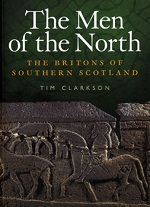Yesterday, Dr Tim Clarkson, who has been kind enough to dig me out of many a comprehension hole without making me feel stupid, got a slot on the Mike Zeller show on BBC Radio Cumbria.
Tim Clarkson is an expert – possibly the expert – on the kingdom of Strathclyde, that is to say, the Brythonic (early Welsh)-speaking, ‘dark age’ kingdom that stretched from Glasgow to northern Cumbria, including the sub-kingdom of Rheged, between roughly the 5th and 10th centuries.
You can hear Tim’s bit on the radio show for another 6 days on the BBC i-player on the internet. (Slide the slidey thing along to 48mins 10 seconds to reach this bit).
He talks about:
The meaning of the word, Cumbria and its predecessor, Cumberland, and its ancient links to Wales (home of the ‘cymry’).
The language of Cumbria up until the Norman invasion, which was Cumbric, a dialect of Brythonic, itself a version of early Welsh.
Rheged – here is a guest blog piece on early medieval Cumbria (he’s not that keen on the locating of Rheged in Cumbria, or at least, not all of it) that Tim Clarkson was kind enough to let me filch from him for this blog.
Urien – the 6th century Cumbria ‘hero’ who led an alliance of northern, Brythonic-speaking kingdoms against the invading Angles, but lost in the end when he was betrayed by an ally.
The Battle of Arthuret – which is the story of Gwenddoleu, and his bard, Lailoken.
Merlin – or, at least, one of the historical bards known as Merlin – who was, in fact, Lailoken.
You can buy Tims’ books here. Support our supporters!
01.04.2014







 y that they think there’s a connection to King Arthur, and that he’s buried at the Giant’s Grave in Penrith (although the evidence leans towards it being the grave of a different Owain1).
y that they think there’s a connection to King Arthur, and that he’s buried at the Giant’s Grave in Penrith (although the evidence leans towards it being the grave of a different Owain1).